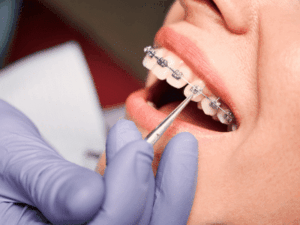
What Braces Feel Like in the First Few Days
Getting metal braces is a big step toward a straighter, more beautiful smile! However, the first few days can feel quite different as your mouth adjusts to this new change. You’ll likely experience a mix of excitement, curiosity, and a little discomfort. Rest assured, these feelings are perfectly normal and temporary. In this blog, Dr. Amir Davoody, Dr.
Ready for Braces? Here’s What Happens at Every Stage of Treatment
Braces are a trusted and effective solution for achieving a straighter smile, but many people delay treatment simply because they are unsure of what to expect. Dr. Amir Davoody, Dr. Rana Mehr, and Dr. Panagiotis Kyteas at Greater Houston Orthodontics walks you through the step-by-step process so you can feel confident in making the right decision for your
How to Teach Children to Brush Their Teeth
Oral hygiene is an important part of our health. Good oral hygiene should be instilled in children from a young age. Parents have a very important job to do when teaching children about how to properly brush their teeth. It is crucial that parents help their children to form healthy habits for their teeth while also making it
Statistics about Smiling and Happiness
Smiling is an important part of your health and happiness! Your dentist’s office (and your orthodontist’s) are committed to keeping your smile healthy and happy for years to come. While smiling can seem very superficial initially, a beautiful smile can actually have a positive impact on your overall well-being in addition to making you feel great. There has
Date Night with Braces – What to Order
Date night can be a nerve-wracking experience. From what to wear, where to go, to what to talk about. The numerous variables of date night can wreak havoc on what should be a fun experience. You don’t want your braces to be another source of worry during your night out, and they don’t have to be! With a
3 Secrets to Making Flossing Simpler
Flossing may not be everyone’s favorite, but it is IMPORTANT! Flossing is just as important as brushing your teeth to prevent gum disease, cavities, and bad breath. Flossing helps to eliminate the accumulation of harmful bacteria and plaque, which is a result of food particles that get trapped between the teeth and under the gum line. These are
